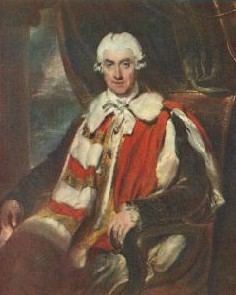Monarch George III Monarch George III Name Thomas 1st | Preceded by The Earl of Suffolk Role British Politician Spouse Elizabeth Bentinck | |
 | ||
Prime Minister The Earl of ChathamThe Duke of Grafton Parents Thomas Thynne, 2nd Viscount Weymouth Children Thomas Thynne, 2nd Marquess of Bath Siblings Henry Carteret, 1st Baron Carteret Similar People Thomas Thynne - 5th Marq, Alexander Thynn - 7th Marquess, Frederick North - Lord North | ||
Succeeded by The Viscount Stormont | ||
thomas thynne 1st marquess of bath honeysuckle filmbay filmfestival cinema john spear
Thomas Thynne, 1st Marquess of Bath KG (1734–1796) was a British politician who held office under George III serving as Southern Secretary, Northern Secretary and Lord Lieutenant of Ireland. Between 1751 and 1789 he was known as The Viscount Weymouth. He is often best known for his role in the Falklands Crisis of 1770.
Contents
- thomas thynne 1st marquess of bath honeysuckle filmbay filmfestival cinema john spear
- Family and early life
- Political career
- Falklands Crisis
- American War of Independence
- Later life
- References
Family and early life
He was the elder son of Thomas Thynne, 2nd Viscount Weymouth (1710–1751), and the great-grandnephew of Thomas Thynne (c. 1640–1714), who was created Baron Thynne and Viscount Weymouth in 1682.
His mother was Louisa (d. 1736), daughter of John Carteret, 1st Earl Granville, and a descendant of the family of Granville who held the earldom of Bath from 1661 to 1711. The Thynnes are descended from Sir John Thynne, the builder of Longleat, the splendid seat of the family in Wiltshire. Sir John owed his wealth and position to the favour of his master, the protector Somerset; he was comptroller of the household of the Lady Elizabeth, and was a person of some importance after that princess became queen. Another famous member of this family was Thomas Thynne (1648–1682), called on account of his wealth "Tom of Ten Thousand." He is celebrated by Dryden as Issachar in Absalom and Achitophel, and was murdered in London by some Swedes in February 1682.
Political career
Born on 13 September 1734, Thomas Thynne succeeded his father as 3rd Viscount Weymouth in January 1751 and was Lord Lieutenant of Ireland for a short time during 1765, although he never visited that country. Having, however, become prominent in British politics, he was appointed Secretary of State for the Northern Department in January 1768; he acted with great promptitude during the unrest caused by John Wilkes and the Middlesex election of 1768. He was then attacked and libeled by Wilkes, who was consequently expelled from the House of Commons.
Falklands Crisis
Before the close of 1768 he was transferred from the northern to the southern department, but he resigned in December 1770 in the midst of the dispute with Spain over the possession of the Falkland Islands.
American War of Independence
In November 1775 Weymouth returned to his former office of secretary for the southern department, undertaking in addition the duties attached to the northern department for a few months in 1779, but he resigned both positions in the autumn of that year.
Later life
He was High Steward of the Royal Town of Sutton Coldfield from 1781 until his death.
In 1789 he was created Marquess of Bath and died in November 1796. He had married Elizabeth (died 1825), daughter of Margaret Cavendish Bentinck and William Bentinck, Duchess and Duke of Portland, by whom he had three sons and three daughters. He was succeeded by his eldest son Thomas.
Weymouth was a man of considerable ability, especially as a speaker. According to more modern standards, his habits were very coarse, resembling those of his friend and frequent companion Charles James Fox. Horace Walpole refers frequently to his idleness and his drunkenness, and in early life at least "his great fortune he had damaged: by such profuse play, that his house was often full of bailiffs."
